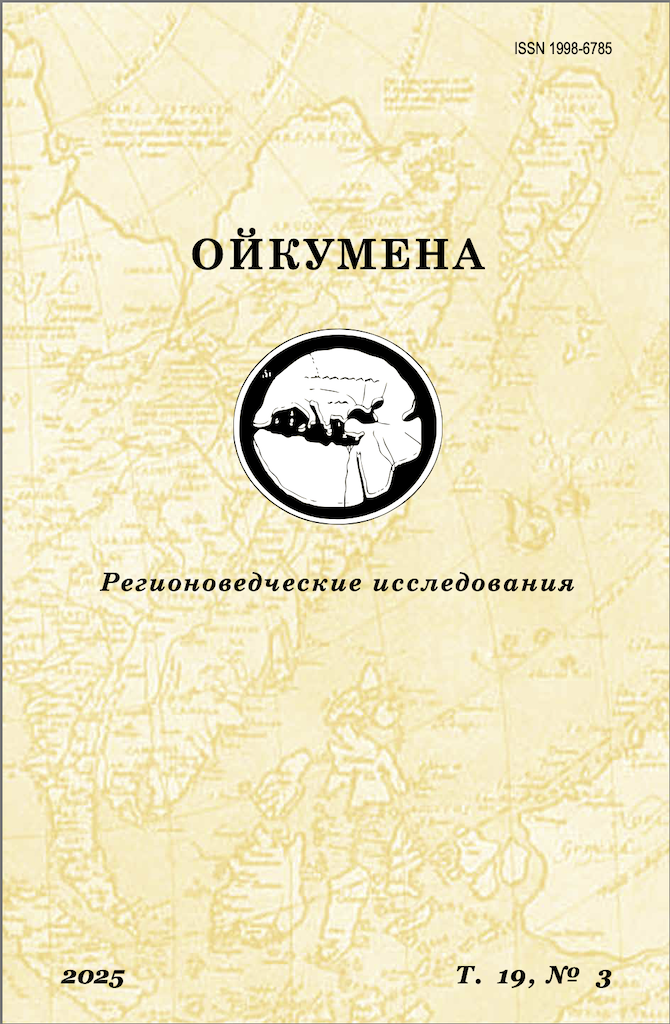сотрудник
В данной работе авторы рассматривают особенности использования технологий искусственного интеллекта учёными в контексте поиска научной информации. В фокусе исследования – ограничения искусственного интеллекта в поиске научных публикаций, вышедших в разных регионах и на разных языках. Приводятся результаты эксперимента по поиску научных публикаций на трёх языках, с использованием четырёх инструментов искусственного интеллекта. Сформулированы рекомендации, полезные исследователям для нахождения публикаций с помощью ИИ, и способы повышения видимости собственных работ для сервисов искусственного интеллекта.
поиск научной литературы, видимость научных результатов, академические базы данных, научное признание, региональные смещения
1. Аверкиев С. Это не чат, это GigaChat. Русскоязычная ChatGPT от Сбера. URL: https://habr.com/ru/companies/sberbank/articles/730108/ (дата обращения: 13.07.2025).
2. Соколов М. М., Губа К. С., Зименкова Т. С. Как становятся профессорами: академические карьеры, рынки и власть в пяти странах. М.: Редакция журнала "Новое литературное обозрение," 2015. 832 с.
3. Гурный М. Великая война профессоров: гуманитарные науки, 1912–1923. СПб: Издательство Европейского университета, 2021. 414 p.
4. Acut D. P. et al. "ChatGPT 4.0 Ghosted Us While Conducting Literature Search:" Modeling the Chatbot’s Generated No.n-Existent References Using Regression Analysis // Internet Reference Services Quarterly. 2025. Vol. 29. No. 1. P. 27–54. DOI: https://doi.org/10.1080/10875301.2024.2426793
5. Céspedes L. et al. Evaluating the linguistic coverage of OpenAlex: An assessment of metadata accuracy and completeness // Journal of the Association for Information Science and Technology. 2025. Vol. 76. No. 6. P. 884-895. DOI: https://doi.org/10.1002/asi.24979
6. DAIR.AI. Prompt Hub – Nextra. URL: https://www.promptingguide.ai/prompts (accessed 16.07.2025).
7. Dorsch I. Relative visibility of authors’ publications in different information services // Scientometrics. 2017. Vol. 112. No. 2. P. 917–925. DOI: https://doi.org/10.1007/s11192-017-2416-9; EDN: https://elibrary.ru/SERLHN
8. Fagan J. C. An evidence-based review of academic web search engines, 2014-2016: Implications for librarians’ practice and research agenda //Information Technology and Libraries. 2017. Vol. 36. No. 2. P. 7–47. DOI: https://doi.org/10.6017/ital.v36i2.9718
9. Grudniewicz A. et al. Predatory journals: no definition, no defence // Nature. 2019. Vol. 576. No. 7786. P. 210–212. DOI: https://doi.org/10.1038/d41586-019-03759-y
10. Gwon Y. N. et al. The use of generative AI for scientific literature searches for systematic reviews: ChatGPT and Microsoft Bing AI performance evaluation // JMIR Medical Informatics. 2024. Vol. 12. P. e51187. DOI: https://doi.org/10.2196/51187; EDN: https://elibrary.ru/HWYONM
11. Hangzhou DeepSeek Artificial Intelligence Co., Ltd. Model Mechanism and Training Methods of DeepSeek. URL: https://cdn.deepseek.com/policies/en-US/model-algorithm-disclosure.html (accessed 16.07.2025).
12. Helm P. et al. Diversity and language technology: how language modeling bias causes epistemic injustice // Ethics and Information Technology. 2024. Vol. 26. No. 1. P. 8. DOI: https://doi.org/10.1007/s10676-023-09742-6; EDN: https://elibrary.ru/KFBDKT
13. Latour B. Laboratory life: the social construction of scientific facts. Laboratory life / B. Latour, S. Woolgar. Beverly Hills: Sage Publications, 1979. 282 p.
14. Lieberum J. L. Large language models for conducting systematic reviews: on the rise, but not yet ready for use–a scoping review // Journal of Clinical Epidemiology. 2025. Vol. 181. 111746. DOI: https://doi.org/10.1016/j.jclinepi.2025.111746
15. McGowan A. et al. ChatGPT and Bard exhibit spontaneous citation fabrication during psychiatry literature search // Psychiatry Research. 2023. Vol. 326. 115334. DOI: https://doi.org/10.1016/j.psychres.2023.115334; EDN: https://elibrary.ru/QXDNHD
16. Merton R. K. Priorities in scientific discovery: A chapter in the sociology of science / R. K. Merton // American Sociological Review. 1957. Vol. 22. No. 6. P. 635–659. DOI: https://doi.org/10.2307/2089193
17. Merton R. K. The Matthew Effect in Science // Science. 1968. Vol. 159. No. 3810. P. 56–63. DOI: https://doi.org/10.1126/science.159.3810.56; EDN: https://elibrary.ru/IDENQP
18. Mistral AI. Does Mistral AI communicate on the training datasets? | Mistral AI – Help Center. URL: https://help.mistral.ai/en/articles/347390-does-mistral-ai-communicate-on-the-training-datasets (accessed 13.07.2025).
19. OpenAI. How ChatGPT and our foundation models are developed. URL: https://help.openai.com/en/articles/7842364-how-chatgpt-and-our-foundation-models-are-developed (accessed 13.07.2025).
20. Ortega J. L. To be or not to be on Twitter, and its relationship with the tweeting and citation of research papers / J. L. Ortega // Scientometrics. 2016. Vol. 109. No. 2. P. 1353–1364 DOI: https://doi.org/10.1007/s11192-016-2113-0; EDN: https://elibrary.ru/PWKPIG
21. Scherbakov D. et al. The emergence of large language models as tools in literature reviews: a large language model-assisted systematic review //Journal of the American Medical Informatics Association. 2025. Vol. 32. No. 6. P. 1071–1086. DOI: https://doi.org/10.1093/jamia/ocaf063
22. Shapiro S. Academic librarians, information overload, and the Tao of discovery // The Journal of Academic Librarianship. 2018. Vol. 44. No. 5. P. 671–673. DOI: https://doi.org/10.1016/j.acalib.2018.07.004
23. Wiley. ExplanAItions: an artificial intelligence study by Wiley. 2025. URL: https://www.wiley.com/en-in/ ai-study (accessed 14.07.2025).
24. Yang Y. et al. Unmasking and quantifying racial bias of large language models in medical report generation // Communications Medicine. 2024. Vol. 4. No. 1. P. 176. DOI: https://doi.org/10.1038/s43856-024-00601-z; EDN: https://elibrary.ru/ZKURJS
25. Yip R. et al. Artificial intelligence’s contribution to biomedical literature search: revolutionizing or complicating? // PLOS Digital Health. 2025. Vol. 4. No. 5. e0000849. DOI: https://doi.org/10.1371/journal.pdig.0000849











